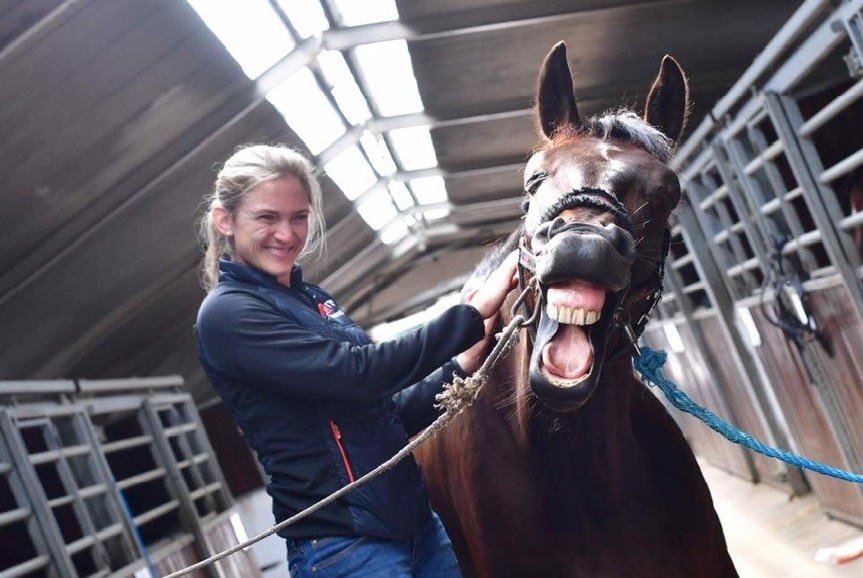Discover the Impressive Benefits of Equine Therapy for Psychological Recovery
Examining the Efficiency of Laser Therapy in Horse Therapy for Injury Recovery
The examination of laser therapy's efficiency in equine injury recovery pivots on multiple elements, including healing time, pain reduction, and cells regeneration. Veterinarians regularly observe premium results with laser treatment compared to standard techniques, placing it as a critical aspect in equine treatment.
Recognizing Laser Treatment
Laser treatment has actually come to be a crucial tool in veterinary medicine, especially in the treatment of equine problems. Understood for its non-invasive nature and efficacy, laser treatment entails the application of details wavelengths of light to boost tissue repair service and decrease swelling. This restorative technique is increasingly favored for its capability to speed up the healing procedure in equines experiencing a range of musculoskeletal injuries and chronic conditions.
The primary system behind laser treatment is its ability to improve cellular features. In addition, laser therapy promotes vasodilation, enhancing blood circulation and oxygen delivery to damaged tissues, therefore quickening recovery.
In equine medicine, laser therapy is especially beneficial for conditions such as tendonitis, osteoarthritis, and wound recovery. The method is admired for its pain-relieving residential properties, permitting steeds to regain movement and feature a lot more swiftly. Vets additionally value its marginal negative effects compared to other treatment modalities, making it a trustworthy and secure alternative for equine treatment.

Exactly How Laser Therapy Works

Upon absorption, these photons trigger a collection of biochemical adjustments, improving mitochondrial function and leading to raised adenosine triphosphate (ATP) manufacturing. This increase in ATP accelerates mobile metabolic process, promoting cells repair service and regeneration. Additionally, laser treatment regulates inflammatory responses by influencing cytokine levels and reducing oxidative stress and anxiety, therefore easing pain and swelling.
An additional considerable aspect of laser treatment is its role in boosting microcirculation. The therapy advertises vasodilation, improving blood circulation and oxygen shipment to broken tissues (Equine Therapy). This facilitates the elimination of cellular particles and supports the expansion of fibroblasts and collagen synthesis, crucial for injury healing
Scientific Proof
The effectiveness of laser treatment in equine treatment has actually been validated via different clinical research studies, showcasing its therapeutic possible across a series of conditions. Several regulated tests and observational research studies have actually documented considerable renovations in tissue repair work, discomfort decrease, and overall rehab timelines. A research conducted by Turner et al. (2012) demonstrated that equines why not try here treated with low-level laser therapy (LLLT) for ligament injuries showed increased healing compared to those receiving traditional treatments. The research highlighted a significant decrease in swelling and boosted collagen formation.
Likewise, research study by Johnson and associates (2015) concentrated on equine muscle injuries, revealing that laser treatment significantly expedited muscular tissue fiber regrowth and lowered muscular tissue stiffness. These findings were corroborated by histological evaluations revealing enhanced muscle tissue company. Medical assessments have actually shown that laser therapy can relieve persistent conditions such as osteo arthritis. A research study by Smith et al. (2018) reported that horses with osteoarthritic joints experienced remarkable discomfort relief and raised series of motion adhering to a program of laser treatment sessions.
Vet Insights

Veterinarians additionally value the convenience of laser therapy. She aims out that laser treatment can be customized to the certain requirements of each steed, guaranteeing optimum outcomes.
Furthermore, veterinarians value the ability to incorporate laser therapy with various other therapy techniques. This multimodal technique can improve general therapy efficiency, supplying an extensive service for equine recovery. Such endorsements from experienced specialists underscore the expanding approval and application of laser therapy in equine medicine.
Practical Factors To Consider
A key element of implementing laser therapy in equine treatment includes recognizing the functional considerations that guarantee its efficacy and safety. Primarily, it is crucial to pick the appropriate laser gadget, as numerous kinds vary in wavelength, power, and infiltration deepness. Equine Therapy. Vets need to be fluent in these Full Article criteria to customize therapy procedures properly to every injury kind
Moreover, the regularity and period of laser therapy sessions need mindful planning to make the most of healing advantages while reducing any kind of potential unfavorable results. Consistent monitoring of the equine's feedback to treatment can direct needed changes in the therapy program. Establishing a secure and regulated environment during treatments is likewise crucial to prevent unexpected direct exposure to laser exhausts, which can harm both the horse and the handler.
Training and accreditation of employees carrying out laser treatment are paramount to guarantee appropriate method and to maintain security criteria. In addition, keeping exact documents of each session, consisting of laser setups and observed end results, is essential for reviewing the total performance of the therapy and for making data-driven choices.
Verdict
Laser treatment has arised as a reliable modality in equine injury recovery, using substantial advantages in healing time, pain alleviation, and tissue recovery. For optimal outcomes, continuous monitoring and personalized treatment procedures remain crucial in leveraging the complete potential of laser treatment in equine care.